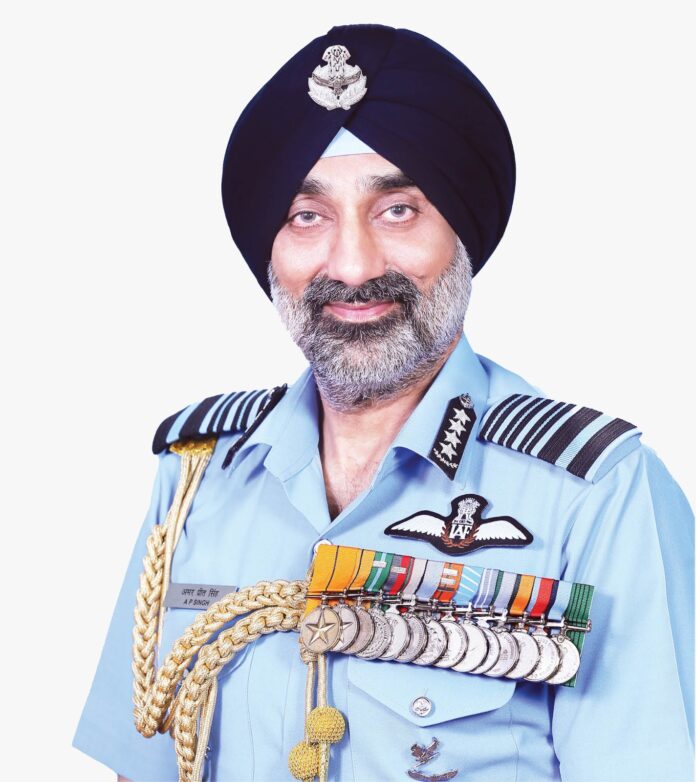Kamal Shah
As the nation marks Air Force Day 2025, the Indian Air Force (IAF) reflects a period of unprecedented modernization driven by the strategic aim to evolve into a future-ready, technologically advanced, and self-reliant aerospace power. This transformation is guided by a holistic approach that integrates not only the induction of aircraft but also the simultaneous enhancement of sensors, weapons, communication networks, decision-support systems, and human capital.
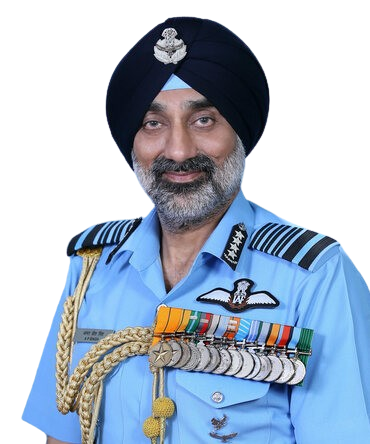
Key advancements have been recorded across multiple domains. The fighter fleet continues to grow through the Tejas Mk-IA programme, with contracts for 83 aircraft finalized and another 97 under process, laying the foundation for a strong indigenous combat capability. Progress on the LCA Mk-II and the fifth-generation Advanced Medium Combat Aircraft (AMCA) underscores a long-term commitment to self-reliance, while upgrades to the Su-30 fleet ensure sustained frontline potency. In the transport domain, the C-295 MW programme enhances logistical flexibility, complemented by plans for a new generation of Medium Transport Aircraft to replace legacy systems.
Indigenous radar systems—such as Arudhra, Ashwini, and Aslesha—have expanded air defence coverage, particularly in strategically sensitive areas, while new missile and weapon developments, including Astra Mk-II and the LR-LACM, strengthen long-range strike and deterrence capabilities. Upgrades to the Integrated Air Command and Control System (IACCS) and the deployment of Secure Software Defined Radios (SDRs) have reinforced network resilience and real-time multi-domain integration.
Looking ahead, Air Chief Marshal AP Singh PVSM AVSM, Chief Of Air Staff, encapsulates the IAF’s priorities as centering on the rapid induction of contemporary fighters, precision weapons, electronic warfare capabilities, and unmanned systems, coupled with continued investment in training and leadership development. In an exclusive interview with Indian Aerospace & Defence, he stresses that the modernization effort is not only about acquiring superior equipment but also about empowering skilled personnel to operate within a dynamic security environment. Through this integrated approach, the IAF is steadily becoming a more agile, adaptive, and self-reliant force—truly future-ready by being now-ready.

Q. As we proudly celebrate Air Force Day 2025, how would you assess the momentum and impact of the Indian Air Force’s modernization drive this year? Which standout platforms and cutting-edge technologies have been inducted in 2025, and in what concrete ways have they sharpened our deterrence, survivability, and joint warfighting capabilities amid rapidly evolving regional security challenges?
A. The Indian Air Force’s modernisation drive has gathered remarkable momentum in recent years, driven by our vision to evolve into a future-ready, technology-driven and self-reliant aerospace power. Our approach is capability-centric, focusing not just on aircraft but on the entire ecosystem of platforms, sensors, weapons, networks, and, most importantly, our people. Investments in AI-based decision support, space integration, and long-range precision capabilities are transforming the reach, tempo, and responsiveness of our operations. In terms of platforms and technologies, significant progress has been achieved across multiple fronts:
- Fighter Fleet:
The LCA Tejas Mk-IA programme is progressing well, with contracts for 83 aircraft already signed and an additional 97 being processed. Together, these will form a strong indigenous backbone for our future fighter fleet. We are also pursuing the MRFA acquisition to bridge capability gaps. We are actively supporting the development of the LCA Mk-II and the fifth-generation AMCA, expected to enter service in the next decade. In parallel, the procurement of 12 additional Su-30 MKIs and the indigenous upgrade of 84 existing Su-30s will further enhance our combat edge while reducing our dependency on foreign OEMs.

- Transport Capability:
Under the C-295 MW programme, 16 aircraft have already been delivered, and the first ‘Made in India’ C-295 is expected to roll out in 2026. We are also evaluating the procurement of 60 new Medium Transport Aircraft to replace our ageing IL-76 and AN-32 fleets, furthering our logistical flexibility and strategic reach.
- Air Defence and Surveillance:
We have achieved notable progress in indigenous radar development with systems such as Arudhra (MPR), Ashwini (LLTR), Aslesha (LLLTR) and the new High Power Radar. Plans for Mountain Radars based on indigenous designs are also advancing well. These systems significantly strengthen our air defence network, especially along sensitive sectors.
- Weapons and Missile Systems:
The IAF continues to induct modern aerial weapons and surface-to-air systems. Trials of the VSHORADS missile have been completed, and production is expected to begin in 2026. Development of the Astra Mk-II beyond-visual-range missile and the Long-Range Land Attack Cruise Missile (LR-LACM) is progressing steadily, as is the induction of Close-In Weapon Systems (CIWS).
- Networks and Communication:
Our indigenous Integrated Air Command and Control System (IACCS) is being upgraded to integrate real-time data from all domains. Secure Software Defined Radios (SDRs) with encrypted communication are being fielded across combat platforms to enhance resilience in contested environments.
Looking ahead, our priorities include strengthening combat potential through the induction of contemporary fighters, long-range precision weapons, advanced electronic warfare suites, secure communications, airborne early warning and refuelling assets, and unmanned systems capable of operating in complex airspaces.
Ultimately, while technology and platforms form the visible face of modernisation, our greatest strength lies in our people. The finest equipment means little without the skill, professionalism, and motivation of those who operate it. Therefore, developing our human capital remains at the core of our transformation through modernised training, adaptive leadership and streamlined processes.
Our goal is to be ‘Future Ready’ by being ‘Now Ready’. Every step we take today is shaping an Air Force that is agile, self-reliant and ready to meet the challenges of tomorrow with confidence and capability.
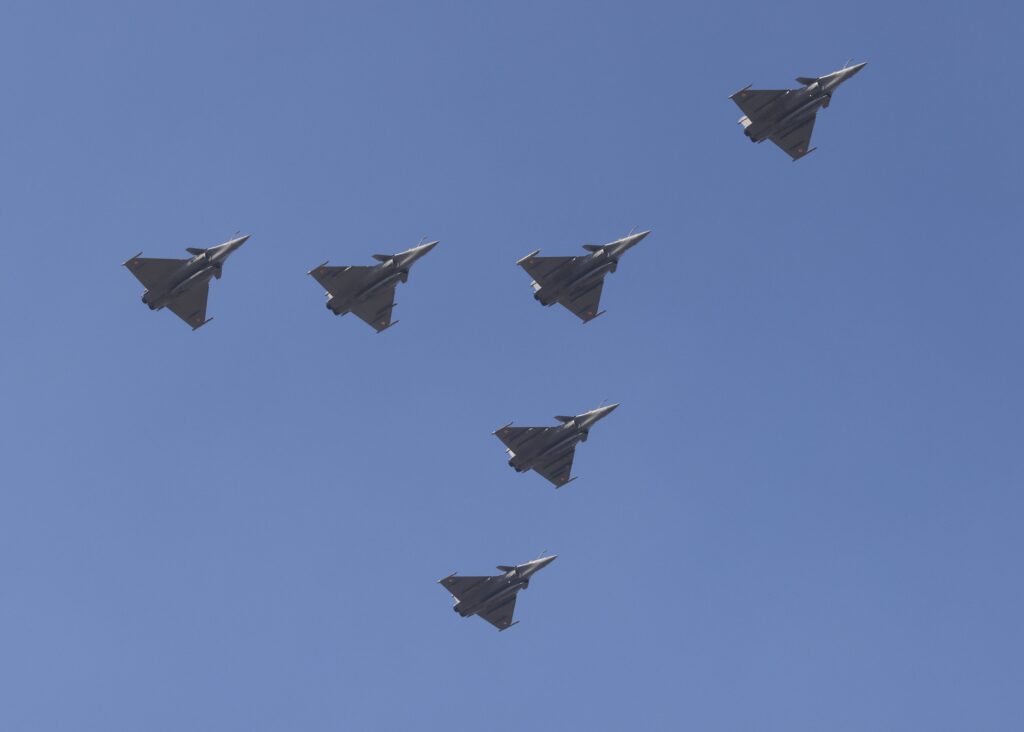
Q. In light of the government’s emphasis on Atmanirbhar Bharat in the defence sector, what measurable progress has the Indian Air Force achieved in integrating indigenously developed platforms and technologies—particularly the AMCA, LCA Tejas variants, and ongoing helicopter programs—into its operational fleet? Additionally, how is the IAF’s partnership with Indian industry influencing timelines, capability maturation, and export potential, and what milestones can be anticipated in the near-to medium-term to solidify India’s self-reliant air power ecosystem?
A. The Indian Air Force is fully aligned with the Government’s vision of Atmanirbhar Bharat and has made substantial progress toward building a self-reliant and resilient aerospace ecosystem. Our modernisation roadmap places a strong emphasis on indigenous platforms, technologies and design capabilities, ensuring that India not only meets its operational needs but also emerges as a global player in defence manufacturing and exports.
A significant step in this direction is the Light Combat Aircraft (LCA) Tejas programme. The contract for 83 LCA Mk-IA aircraft is already under execution, and an additional 97 aircraft are planned, which together will form the backbone of our future indigenous fighter fleet. Beyond this, we are collaborating closely with DRDO on the LCA Mk-II and the fifth-generation Advanced Medium Combat Aircraft (AMCA) projects. The LCA Mk-II completed its Critical Design Review in 2022 and is expected to achieve operational clearance by 2027. The AMCA, on the other hand, was sanctioned in March 2024 with an allocation of ₹15,803 crore. The program is progressing well, with prototype rollout targeted for 2027 and maiden flight by 2028.
You may be aware that AMCA is planned to be developed through a model of true public-private partnership. Multiple major private Indian defence companies have shown an inclination to join DRDO’s Aeronautical Development Agency (ADA) in this ambitious programme. These projects will significantly strengthen our combat capability and self-reliance in the coming decade.
Simultaneously, the IAF is pursuing several indigenous programmes, including Akash and Akash-NG missile systems, Pralay, BrahMos, Astra, SAAW, AEW&C, I2STAR, HTT-40 trainer, ALH, LCH, IMRH helicopters, and indigenous radars such as Ashwini, Arudhra, and Ashlesha. To accelerate development and integration, over 110 IAF officers are embedded across DRDO, ADE, LRDE, and other DPSUs, ensuring better coordination, faster trials, and practical feedback to developers.
We have also institutionalised a robust innovation ecosystem. The Directorate of Aerospace Design (DAD) and Regional Aerospace and Innovation Divisions (RAID) at Gandhinagar and Bengaluru are key enablers connecting the IAF with industry, start-ups, and MSMEs. Through initiatives such as the IAF Compendium of Challenges and Opportunities for Indian Industry, released at Aero India 2025, we are fostering collaboration, funding innovation, and guiding partners through certification and trial processes.
Today, a majority of our new acquisitions fall under the Buy (Indian) or Make in India categories. Even in cases involving foreign procurement, we ensure maximum Indigenous Content (IC), Transfer of Technology (ToT) and local production partnerships, as demonstrated by the C-295 transport aircraft programme. Our proposal for the MRFA aircraft also falls in this category. Global partners are being encouraged to establish manufacturing infrastructure in India and co-develop future technologies with Indian entities.
Our commitment is reflected in budgetary terms as well. Nearly 90% of the IAF’s capital procurement expenditure in FY 2024–25 was sourced from the domestic industry.
I would like to stress the fact that it is well above the Ministry of Defence’s 70% benchmark.
Q. In light of the rapidly evolving character of warfare—particularly the growing prominence of cyber, space, and electronic warfare—how is the Indian Air Force adapting its doctrine, force structure, and training methodologies to ensure sustained dominance across all domains? Additionally, what concrete measures are being implemented to integrate artificial intelligence, data-driven decision-making tools, and other advanced technologies into operational planning, mission execution, and command-and-control frameworks?
A. The Indian Air Force recognises that the nature of warfare is undergoing a fundamental transformation, with cyber, space, and electronic warfare emerging as decisive domains alongside air, land, and sea. In response, we are evolving our doctrine, force structure, and training to ensure that the IAF remains agile, networked, and dominant across all domains.
At the national level, the recently released Joint Doctrine on Multi-Domain Operations lays down the conceptual framework for integrated warfighting across all spectrums. At the service level, the IAF’s own revised doctrine reflects this shift and captures the lessons from recent operations, including Op Sindoor, where synergy across domains proved critical. These doctrinal updates are shaping not only how we plan and fight future wars but also how we train, equip and organise our force.
To enable this transformation, we have established dedicated structures such as the Unit for Digitisation, Automation, Artificial Intelligence, and App Networking (UDAAN). It serves as a hub for developing AI-driven decision-support tools and data analytics. Our digital backbone, AFNET, has evolved into a full-fledged warfighting network connecting mission planning systems, electronic warfare tools, debrief systems and battle management networks to ensure real-time situational awareness and seamless information flow during high-tempo operations.
Artificial Intelligence is being progressively integrated into every facet of air operations. Our upgraded Integrated Air Command and Control System (IACCS) now incorporates AI-powered threat analysis, predictive templating of adversary activity and real-time guidance solutions for mission execution. AI tools are also being leveraged for operational stamina forecasting, intelligence processing and document management.
In the maintenance and logistics domain, predictive analytics and AI-driven diagnostic tools are helping us anticipate engine or component failures, reduce downtime and optimise fleet availability. We are also using drone-based inspection systems and non-invasive circuit diagnostics to enhance maintenance efficiency. For pilot training, AI-enabled analytics now offer personalised feedback, real-time transcription of cockpit data and advanced debrief capabilities to improve safety and performance.
Our partnership with academia and industry continues to drive innovation, particularly in AI-enabled weather forecasting, unmanned systems, and sensor fusion. These initiatives are strengthening our network-centric and information-dominant warfare capabilities.
Ultimately, while technology is the great enabler, our people remain the decisive factor. The IAF continues to modernise its training, structures, and processes to cultivate a force that is adaptive, innovative, and prepared to meet tomorrow’s challenges.
Q. In what specific ways did the integration of advanced systems, such as the S400 air defence platform and the BrahMos cruise missile, alter the dynamics of air warfare during Operation Sindoor, particularly in terms of deterrence, denial, and precision strike capabilities? Additionally, how were command and control, targeting, and de-confliction coordinated among the Air Force, Army, and Navy, and what key lessons emerged regarding joint force planning, interoperability, and real-time execution?
A. Operation Sindoor demonstrated the decisive advantage of integrating advanced technologies and joint warfighting concepts beyond exercises, into actual operations. The induction of long-range Air Defence systems like the S-400 and precision-strike weapons such as the BrahMos missile has fundamentally changed the way we plan and execute air operations.

With the deployment of the S-400 system, the IAF’s air defence posture transitioned from reactive primarily to proactive and deterrence-focused. The system’s extended engagement envelope enabled us to establish a layered defensive shield, denying the adversary access to airspace and freedom of manoeuvre. The presence of such a formidable capability had a clear deterrent effect, significantly constraining the adversary’s offensive options and altering his air campaign calculus.
Simultaneously, the BrahMos land-attack cruise missile provided the IAF and the joint force with a potent standoff strike capability. Its ability to engage heavily defended, high-value targets with surgical precision enabled us to achieve desired operational effects without escalating the conflict or exposing our own assets to unnecessary risk. The combination of these two systems — air denial through the S-400 and precision engagement via BrahMos — created a comprehensive deterrence and denial architecture that decisively shifted the operational balance in our favour.
Equally important was the high degree of jointness achieved during Op Sindoor. From the outset, the operation was planned and executed under a unified command architecture, guided by clear political and strategic direction. The Chief of Defence Staff and the three Service Chiefs ensured seamless coordination across the Army, Navy and Air Force. Real-time data sharing, standard communication protocols, and pre-established command-and-control structures enabled fast, informed decision-making.
During execution, the entire country operated as a single theatre. The IAF’s Air Defence assets were fully synchronised and worked in tandem with the Army’s Air Defence assets under the broad umbrella cover of IACCS. This ensured effective targeting, deconfliction, and dynamic real-time resource allocation.
The key lessons from Operation Sindoor reaffirmed that joint planning, information integration, and technological interoperability are the bedrock of modern warfare. The success of the operation highlighted the importance of multi-domain synergy to deliver decisive outcomes while maintaining strategic stability.
Q. Given the Indian Air Force’s trailblazing inclusion of women officers in combat roles, what comprehensive measures are being undertaken to enhance human resource development across the service—including modernization of training, expansion of welfare and family support mechanisms, and the establishment of transparent career progression pathways for all personnel—and in what ways is the IAF tailoring these initiatives to align with the evolving expectations and operational requirements of its diverse workforce?
A. The Indian Air Force has always believed that its greatest strength lies in its people. In recent years, we have taken substantial steps to strengthen this human resource base by promoting inclusivity and modernizing training. We are ensuring that every air warrior, irrespective of gender or branch, has the opportunity to fulfil their potential.
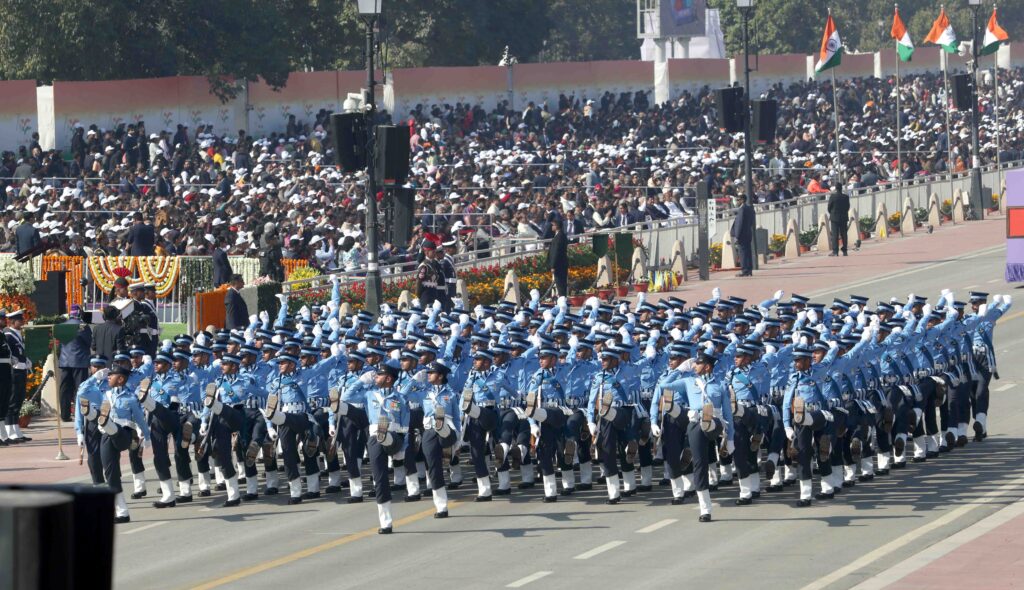
The IAF has been at the forefront of gender integration. Women officers today serve in all combat roles without restriction, including fighter flying and front-line operational assignments. With the induction of women through the National Defence Academy, we have institutionalized gender parity right from the entry level. Our policies on career progression, command appointments and professional development are entirely gender-neutral. Women officers are now commanding operational units, leading combat missions, and representing the IAF in international courses and deputations. Their employment in high-altitude and challenging theatres underlines the Air Force’s commitment to merit-based opportunities. Further, in line with Government of India guidelines, all Short Service Commissioned Officers, irrespective of gender, are eligible for consideration for Permanent Commission, subject to qualitative requirements.
We have also extended this inclusivity to the non-officer cadre under the Agnipath scheme. The induction of women Agniveers marks another landmark in the IAF’s evolution. Over 800 women Agniveers have already completed training and are serving across various IAF bases, while another 150 more are currently under training.
Recognizing that professional excellence must go hand in hand with family well-being, the IAF has instituted comprehensive welfare and support mechanisms. Co-location postings, extended maternity and childcare leave and access to quality childcare facilities are part of our commitment to enabling our personnel to balance professional and personal responsibilities. At present, 68 crèches across IAF stations are operational, supporting our women personnel and young families.
Human resource development in the IAF continues to evolve alongside our operational transformation. We are modernizing our training systems with digital learning tools, simulation-based training and leadership development programmes that prepare our air warriors for multi-domain operations. The focus remains on building a professional, adaptive, and inclusive force, one that reflects the values of modern India and meets the challenges of contemporary air warfare.
Q. How is the Indian Air Force gearing up for the future of warfare with unmanned aerial systems? With drones increasingly shaping modern conflicts—and offering valuable strategic ambiguity—what new capabilities and doctrine is the IAF developing to integrate UAVs across ISR, strike, and electronic warfare missions? Looking ahead, how do you envision unmanned platforms advancing India’s defence strategy, especially in scenarios requiring deniable, precision operations to preserve escalation control while safeguarding national interests?
A. The nature of modern aerial warfare is evolving rapidly and Unmanned Aerial Systems (UAS) are becoming an integral part of operational planning. Recent conflicts have highlighted the utility of drones in harassment, reconnaissance and targeted strikes, though they are most effective in well-defined scenarios with high target certainty. Their value diminishes in missions requiring rapid judgment and complex situational awareness. These are domains where manned platforms continue to excel.
The Indian Air Force’s approach, therefore, is to employ unmanned platforms to complement, not replace, manned aircraft.
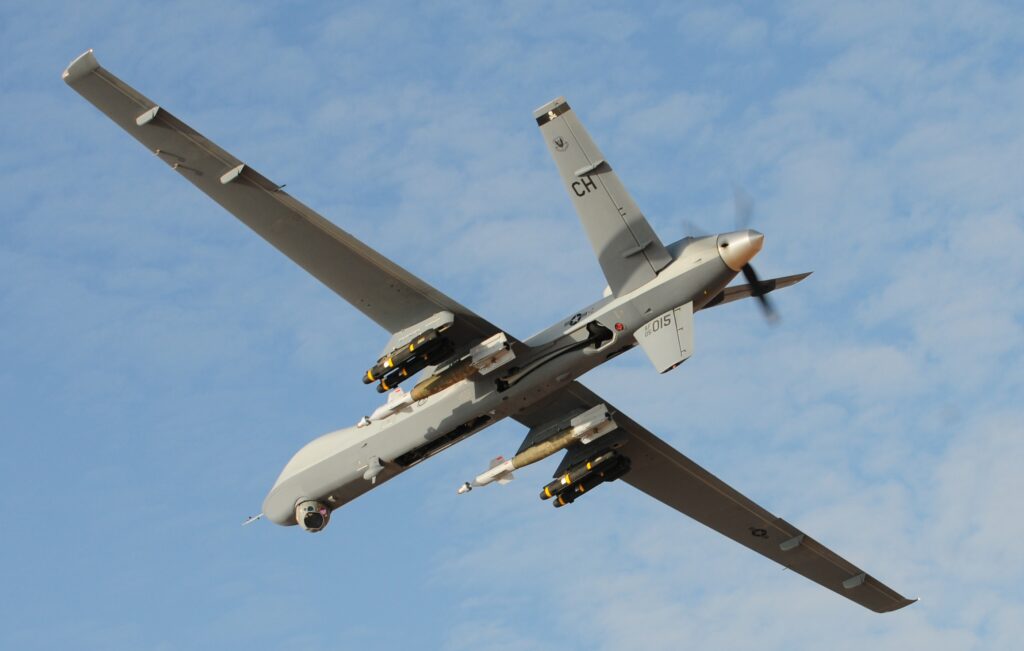
The IAF is strategically integrating drones, missiles and Artificial Intelligence to enhance network-centric operations and counter emerging threats. Our unmanned fleet is expanding with the induction of MQ-9 MALE UAVs, indigenous swarm drones and the development of the Ghatak UCAV for combat roles. In parallel, our missile capabilities — both air-to-surface and air-to-air — are being integrated to create a layered, precision-enabled strike ecosystem.
A key highlight is the operationalisation of drone swarms, which have now been successfully inducted and integrated into IAF operations. These swarms can operate in conjunction with manned platforms, creating battlefield advantages through deception, saturation, and targeted engagements. Equipped with AI-driven target detection and identification, they enable rapid, autonomous responses while preserving the flexibility and decision-making of manned assets.
Looking ahead, the IAF is collaborating with Hindustan Aeronautics Limited to develop the Combat Air Teaming System (CATS), designed for multi-domain operations with manned-unmanned teaming (MUM-T) and enhanced swarming capabilities. Unmanned platforms will increasingly enable deniable, precision operations that maintain escalation control, expand operational options and safeguard national interests. All this while manned platforms would retain the agility and judgment required for complex scenarios.
Through these initiatives, the Indian Air Force is positioning itself for a future in which manned and unmanned systems operate seamlessly together, leveraging advanced AI and networked capabilities to enhance India’s deterrence, responsiveness, and operational effectiveness across all domains.
Q. Looking ahead to the next decade, how do you envision the Indian Air Force shaping regional stability and credible deterrence, and what excites you most about its strategic roadmap? Specifically, which priorities—ranging from integrated air defence, multidomain operations, and force multiplication to indigenous platforms, space-based ISR, and cyberelectronic warfare—are front and center, and where do you see the most critical capability gaps the IAF is actively closing to keep India’s airspace secure, resilient, and unmistakably sovereign?
A. This has already been an exciting decade for the Indian Air Force, both in terms of technological transformation and in demonstrating these capabilities in live operations. Looking ahead, I envision the IAF expanding its operational reach to meet India’s evolving security challenges, not only in the physical realm but also increasingly in the cyber, space, and electronic domains.
The next decade will see the IAF strengthening its role as a key stabilising force in the region through credible deterrence, multidomain operational readiness and robust force multiplication. At the centre of this vision is Project Sudarshan Chakra, which aims to develop an integrated defence shield across domains. This initiative will enhance our situational awareness, networked command and control and rapid response capability, ensuring that India’s sovereignty remains unmistakably protected.
At the same time, the IAF is expanding its maritime and expeditionary reach, particularly in the Indian Ocean Region, to safeguard national interests and contribute to regional stability. In line with this, we are enhancing and regularly exercising our offensive reach. We are also introducing doctrinal innovations for long-range deterrence and precision strike capabilities.
Alongside force expansion, we are prioritising indigenous platforms, space-based ISR, networked Air Defence and cyber-electronic warfare capabilities. These efforts aim to close critical capability gaps, ensure resilient situational awareness and maintain operational superiority against evolving threats.
What excites me most is the synergy of technology, strategy and human talent. By integrating advanced platforms, multi-domain operations, and networked decision-making, the IAF is poised to maintain credible deterrence, contribute decisively to regional stability, and remain agile and adaptive in an increasingly complex security environment.

